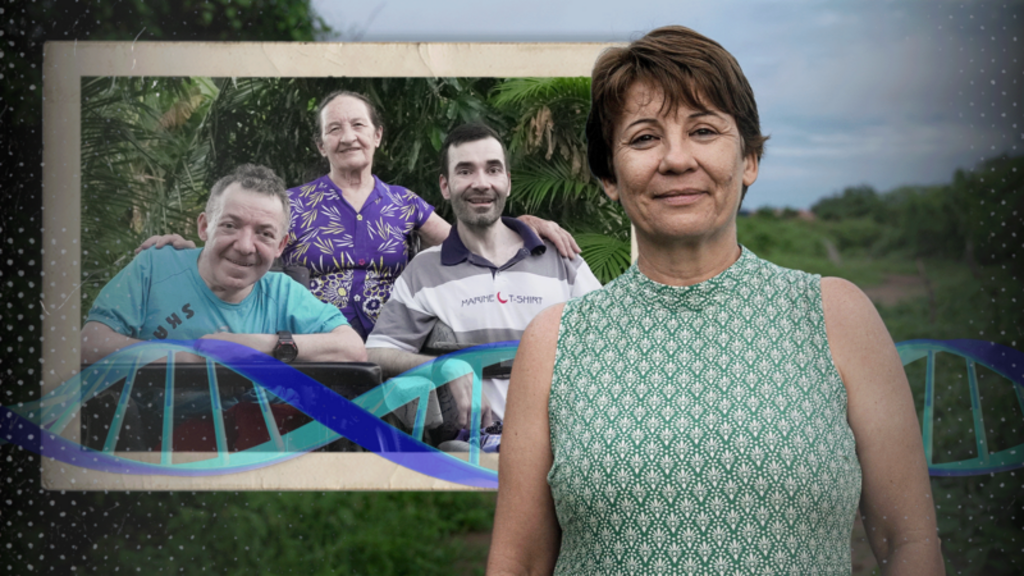Prior to Silvana Santos’s arrival in the small Brazilian town of Serrinha dos Pintos over two decades ago, residents lacked understanding regarding the high incidence of childhood paralysis.
This remote northeastern Brazilian town, home to fewer than 5,000 people, became the location where biologist and geneticist Santos identified and named a previously unknown condition: Spoan syndrome.
A genetic mutation underlies this syndrome, affecting the nervous system and progressively weakening the body. Its manifestation requires inheritance of the altered gene from both parents.
Santos’s research constituted the first global description of this disease. This achievement, along with her subsequent work, led to her recognition as one of the BBC’s 100 most influential women in 2024.
Before Santos’s intervention, affected families lacked a diagnosis. Today, residents confidently discuss Spoan and its genetic basis.
“She provided a diagnosis we never had. Following the research, support arrived: people, funding, wheelchairs,” states Marquinhos, a patient.
Santos hails from São Paulo, Brazil’s largest and wealthiest city, where many of her neighbors were extended family members originally from Serrinha; many were distantly related cousins, some of whom were intermarried.
They informed Santos of the high prevalence of immobility among their hometown residents, with the cause remaining unknown.
One neighbor’s daughter, Zirlândia, suffered from a debilitating condition: involuntary eye movements in childhood, followed by progressive limb weakness, necessitating wheelchair use and assistance with basic activities.
Years of investigation by Santos and her research team identified these as symptoms of Spoan syndrome.
They subsequently identified 82 additional cases globally.
At her neighbors’ invitation, Santos visited Serrinha on vacation. She describes her arrival as entering “a world of its own”—not only for the scenic beauty, but also for a striking social pattern.
Increased interaction with locals revealed a surprisingly high frequency of cousin marriages.
Serrinha’s geographic isolation and limited in-migration have resulted in a high degree of consanguinity, making cousin marriage more prevalent and socially acceptable.
Worldwide, consanguineous marriages were estimated at around 10% in the early 2010s. More recent data reveals substantial variation, exceeding 50% in some countries like Pakistan, compared to 1–4% in Brazil, and less than 1% in the US and Russia. Experts note that most children born to cousin couples are healthy.
However, such unions carry a heightened risk of transmitting harmful genetic mutations.
“For unrelated couples, the chance of a child having a rare genetic disorder is around 2–3%. For cousins, this risk increases to 5–6% per pregnancy,” explains geneticist Luzivan Costa Reis from Brazil’s Federal University of Rio Grande do Sul.
A 2010 study led by Santos revealed that over 30% of Serrinha couples were related, with a third having at least one child with a disability.
Santos embarked on a comprehensive genetic study, involving multiple trips and eventual relocation to the region.
In the early years, she made numerous 1,250-mile (2,000km) journeys between São Paulo and Serrinha. She collected DNA samples, engaging with locals over coffee and gathering family histories to pinpoint the disease-causing mutation.
The anticipated three-month fieldwork extended into years of dedicated research.
This culminated in the 2005 publication detailing Spoan’s discovery in the Brazilian hinterland.
Santos’s team found that the mutation involves the loss of a small chromosomal fragment, leading to overproduction of a key protein in brain cells.
“They say it originated from Maximiano, a womanizer in our family,” recounts farmer Lolô, whose daughter Rejane has Spoan.
Lolô, now 83, married his cousin and remained in Serrinha. He still farms cattle, relying on family to care for Rejane, who faces daily challenges.
However, the genetic mutation behind Spoan predates the legend of Old Maximiano; it likely arrived over 500 years ago with early European settlers in northeastern Brazil.
“Sequencing studies reveal strong European ancestry in patients, corroborating records of Portuguese, Dutch, and Sephardic Jewish presence in the region,” says Santos.
This theory strengthened after two Spoan cases emerged in Egypt, sharing European ancestry, suggesting an Iberian Peninsula origin.
“It likely arrived with related Sephardic Jews or Moors fleeing the Inquisition,” suggests Santos, anticipating more cases globally, particularly in Portugal.
While a cure remains elusive, patient tracking has yielded positive changes. Rejane notes the shift from the stigmatizing term “cripple” to the descriptive “Spoan.”
Wheelchairs provided not only independence but also prevented deformities—previously, many affected individuals remained bedridden.
Spoan’s progression leads to worsening physical limitations with age; by 50, almost all patients become entirely dependent on caregivers.
This is the case for Inés’s children, among Serrinha’s oldest Spoan patients. Chiquinho, 59, is now unable to speak, and Marquinhos, 46, has severely limited communication.
“It’s challenging to have a ‘special’ child. We love them equally, but we suffer for them,” says Inés, married to a second cousin.
Larissa Queiroz, 25, niece of Chiquinho and Marquinhos, also married a distant relative. She and her husband, Saulo, discovered their common ancestor only after several months of dating.
“In Serrinha dos Pintos, deep down, we’re all cousins. We’re related to everyone,” she states.
Couples like Larissa and Saulo are the focus of a new research project involving Santos. Supported by Brazil’s Ministry of Health, it will screen 5,000 couples for genes linked to serious recessive diseases.
The aim is not to discourage cousin marriage but to help couples understand their genetic risks, explains Santos. Now a university professor, she also directs a genetics education center and works to expand testing in northeastern Brazil.
Although she no longer resides in Serrinha dos Pintos, each visit feels like returning home.
“It’s as if Santos is family,” says Inés.
Lee Cadman and fellow podcaster Kevin Dillon discuss men’s mental health with BBC WM.
The Acer Unit at Southmead Hospital, Bristol, faces closure due to financial constraints.
A committee addresses concerns regarding a “critical piece of infrastructure” and construction delays.
Separate bills allowing terminally ill individuals to end their lives are under consideration in Westminster and Scotland.
Farm Care reports a negative impact on young people’s mental health on east Surrey farms.

